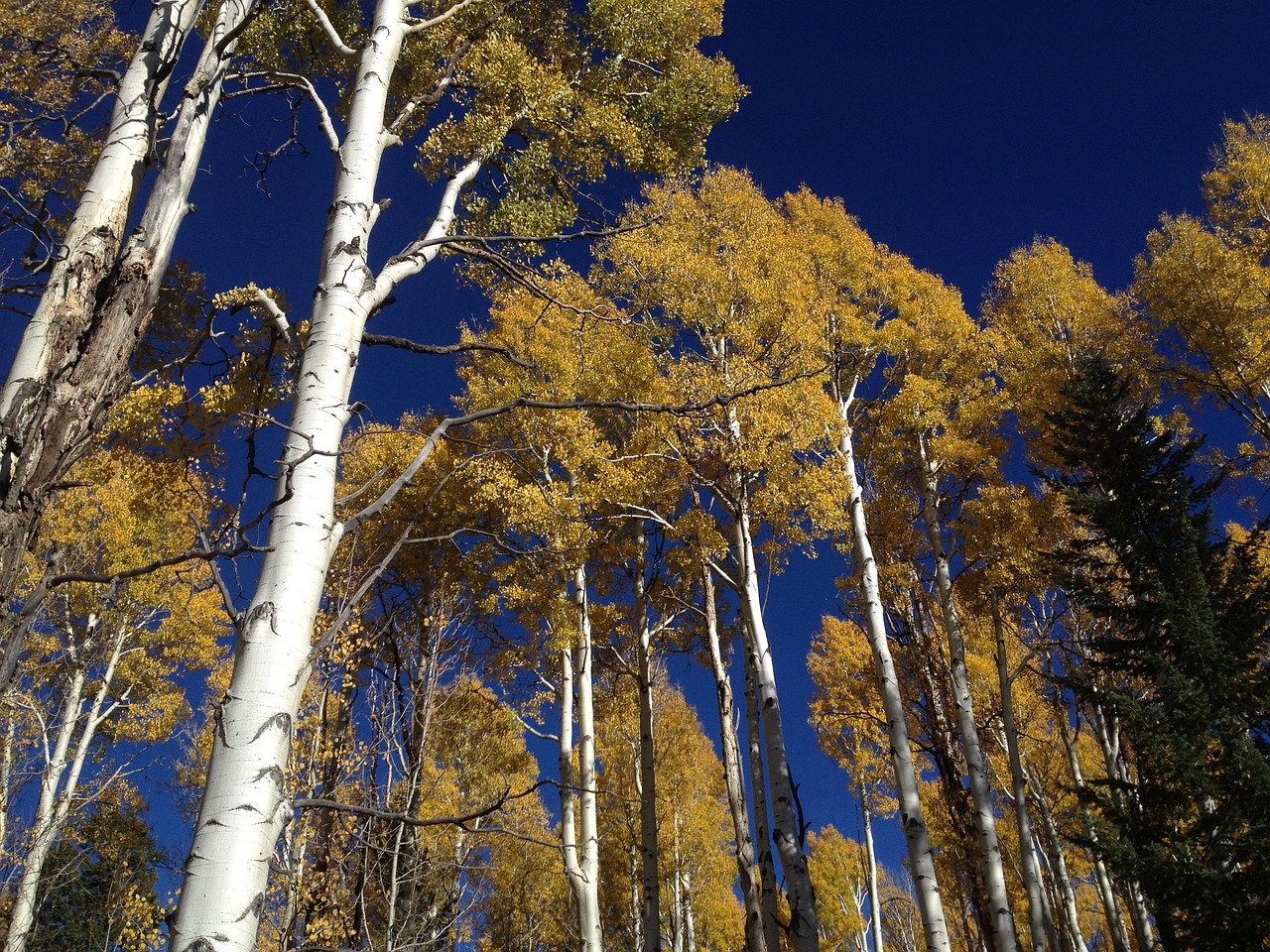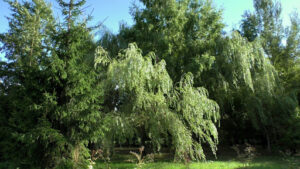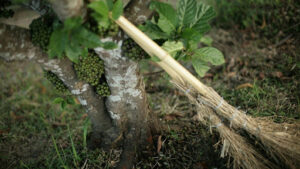Quaking Aspen Water Requirements in Fort Collins: Seasonal Tips

- October 17, 2025
- By Oliver Denver
When I look at Quaking Aspen trees around Fort Collins, it’s pretty obvious they’re not like the average backyard shade tree. The water requirements for Quaking Aspen are shaped by Colorado’s wild swings in temperature, soil conditions, and seasonal precipitation.
Overview Of Quaking Aspen Water Requirements In Colorado’s Front Range
Aspens are sometimes found on drier ridges, but they truly thrive where the ground stays moist and drains well.
Let me break down Quaking Aspen water requirements:
- Water demand is highest during fast spring leaf-out and in hot, dry months.
- Shallow roots mean they’re quick to wilt if the upper soil dries out.
- Well-drained, loamy soils with organic matter hold moisture longer—sandy soil dries too fast for good aspen health.
Here’s a simple table for averageQuaking Aspen water requirements through the growing season:
| Season | Typical Water Requirement (inches/month) | Notes |
| Spring |
2-3 |
Watch for dry late springs |
| Early Summer |
3-4 |
Adjust for heat, more evaporation |
| Late Summer |
2-3 |
Can cut back slightly |
| Fall |
1-2 |
Reduce as temps drop |
A few important things come up all the time when we talk about Quaking Aspen water requirements:
- Fort Collins’ weather, especially during long dry spells, can push aspens to drop leaves early or show burnt edges.
- Deeper watering at less frequent intervals helps roots grow strong, rather than frequent shallow sprays.
- Monitoring soil goes a long way—dig down 6 inches, and the soil should feel slightly damp but never soggy.
I’ve always noticed aspens around here stand out in the fall, their golden leaves contrasting against evergreens and dry grasses. If you want a beautiful autumn display, giving them the right amount of water all summer is key. You can count on the stunning display of brilliant yellow hues during autumn from a healthy aspen stand.
In this part of Colorado, paying attention to Quaking Aspen water requirements isn’t an afterthought—it pretty much determines whether these trees thrive or show signs of drought stress come September. This is why keeping an eye on the weather and your soil isn’t just busywork—it’s what keeps your aspen looking good year after year.
Spring Watering: Meeting Quaking Aspen Water Requirements After Bud Break
Right after the last frost hits and the first fat green buds start to pop on the aspen branches, that’s when I know it’s time to rethink how much I’m watering. Spring is all about giving quaking aspens a consistent drink so their new leaves can flourish without stress. Overwatering can be just as rough as letting them wilt, so balance is everything.
Here’s the routine I stick to once I see those buds split and new leaves show up:
- Check the soil. I like the top 6 inches to feel moist but never muddy.
- I water early in the morning. This helps roots grab moisture before the sun and wind dry things out.
- Deep watering once a week, unless spring rains are heavy—then I cut back.
Below is a quick water schedule I find works in most Fort Collins yards after bud break (adjust if the weather is especially warm or dry):
| Tree Age | Amount (Gallons) | Frequency |
| 1-3 years |
5-10 |
Weekly |
| 4-10 years |
10-15 |
Every 10 days |
| Mature (10+ yrs) |
15-20 |
Every 2 weeks |
Keeping a simple watering schedule right after bud break is key to avoiding weak growth or leaf scorch, especially with those wild spring shifts in temperature we get around here. Stick your finger in the dirt—if it’s dry past your first knuckle, your aspen is thirsty.
Early Summer Care: Adjusting To Rising Temperatures And Quaking Aspen Water Requirements
As summer rolls in here in Fort Collins, I always need to pay extra attention to my Quaking Aspen water requirements. Once spring’s rains fade away, rising temperatures mean the soil dries out much faster, and aspens feel it quickly. The trees can show stress if I don’t adapt my watering to match the warmer weather.
Here’s how I handle early summer care for quaking aspens:
- I check the soil moisture at least once a week by digging down 4-6 inches. If it feels even a little dry, it’s time to water.
- I aim for deep, slow watering to encourage roots to grow further down. Shallow, frequent watering just leads to weak, surface roots.
- Early mornings are my favorite time for watering, since less water evaporates in the cool hours.
Here’s a simple table I use to track my routine:
| Average Day Temperature | Water Frequency | Water Amount per Tree (gal) |
| 70–80°F | Every 7–10 days |
15–20 |
| 80–90°F | Every 5–7 days |
20–25 |
| >90°F | Every 3–5 days |
25+ |
I’ve noticed that quaking aspens tend to show signs of wilting and leaf browning fast if I let the soil get too dry in June. Keeping the soil consistently moist, but not soggy, is what keeps my trees looking their best.
I also try not to rely on sprinklers alone. Sometimes, with Colorado’s quick weather changes, I need to supplement with a hose at the base to make sure each tree gets enough water. If I do these things, my aspens get through the summer heat much happier and healthier.
Peak Summer Drought: Sustaining Quaking Aspen Water Requirements Through Heat

The hottest stretch of summer really challenges Quaking Aspen trees in Fort Collins. Intense heat and dry air pull moisture out of the soil fast, so these trees need more water to keep up. I’ve found that once July rolls around, it’s important to check soil moisture more often and adapt your routine before you notice any wilting or leaf scorch.
Here’s what I do to help my aspens get through the worst of the summer heat:
- Water deep, not shallow: I aim for a slow soak that hits 12-18 inches under the soil, right where roots are most active. One to two inches per week, split between a couple of waterings, works well when nature isn’t lending a hand.
- Early morning is best: I try to water early, before sunrise gets strong and the wind picks up. This way, I lose less water to evaporation.
- Mulch is your friend: Spreading wood chips or pine needles in a three-foot circle keeps the soil cooler and cuts down how fast it dries out between waterings.
| Week | Temperature Range (°F) | Suggested Water (inches) |
| Early July |
80 – 90 |
1.0 |
| Late July |
90+ |
1.5 – 2.0 |
| Early August |
85 – 95 |
1.5 |
I’ve noticed that if I skip routine checks even once during a hot spell, the leaves signal stress almost immediately—a pale color and crisp edges show up fast. Staying ahead on water makes all the difference for aspen health through late summer.
Late Summer To Early Fall: Tapering Water While Honoring Quaking Aspen Water Requirements
By late August, I start noticing the nights getting cooler here in Fort Collins, and my approach to watering quaking aspens changes, too. During this stretch, as temperatures gradually drop and daylight shortens, Quaking Aspen trees signal the end of their active growing period. It’s important to slowly reduce supplemental water rather than stopping abruptly.
Here’s what I do as late summer moves into early fall:
- Water less frequently, but continue deep watering every 2-3 weeks, depending on rainfall.
- Check the soil—if the top three inches are dry, it’s time to water, but avoid saturating the ground.
- Watch for early leaf yellowing. This could mean the tree needs a bit more moisture, especially if it’s been dry.
| Average Daytime Temps | General Watering Frequency |
Notes |
| 80–85°F | Every 2–3 weeks | Decrease gradually |
| 70–80°F | Every 3–4 weeks | Watch the rainfall, adjust more |
| <70°F | ~Monthly if dry | Prepare for fall/winter |
I find that keeping the soil just slightly moist but not soggy in September keeps my aspens healthier and less stressed as they gear down for dormancy. Overwatering now can cause root problems, while underwatering sets them up for a rough winter.
Easing off on water through late summer into early fall is really about finding the right balance. I always err on the side of caution, watching how the trees respond instead of following just the calendar or a strict rule.
Fall Watering Strategy: Preparing For Dormancy With Proper Quaking Aspen Water Requirements
As we move into fall in Fort Collins, I start thinking seriously about how much water Quaking Aspen requires. This time of year is all about getting the trees ready for the cold ahead. The goal is to help Aspen transition from the busy growing season to dormancy without stressing their roots or lowering their overall vigor.
Here’s how I approach watering my aspens in fall:
- I begin reducing the frequency of watering in late August through September, but I do not cut it off completely all at once.
- I check the soil about 4 to 6 inches deep. If it feels dry, it’s time to water thoroughly.
- I aim for a slow, deep soak rather than frequent shallow watering; this helps roots absorb as much moisture as possible before the ground begins to freeze.
- I plan the final deep watering in late October or about a week before the first expected hard freeze, especially if the autumn has been warm and dry.
Here’s a quick reference table I’ve used to stay on track:
| Month | Watering Frequency |
Notes |
| September | Every 2-3 weeks | Reduce if the rainfall is adequate |
| Early October | Once or twice | Deep soak if the weather is dry |
| Late October | Final thorough soak | Finish before the ground freezes |
One thing I always remind myself: don’t let the soil get waterlogged, especially as the leaves drop and cooler temps slow evaporation. Soggy roots are not what you want before dormancy sets in.
By following these steps, I do my best to keep my aspens healthy as they settle in for winter.
Winter Hydration: Meeting Quaking Aspen Water Requirements During Freezing And Snow Periods
Winter always throws me for a loop when it comes to watering quaking aspens in Fort Collins. We get cold snaps, snow piles up, then suddenly, everything melts and refreezes. The thing is, even though these trees are dormant, they can still get thirsty, especially during dry spells with little snow. Roots can get damaged if the tree sits too dry for too long, even when the leaves are gone.
Here’s how I handle winter hydration:
- I check the soil moisture every couple of weeks—if I can stick a screwdriver into the ground and it’s mostly dry down to about 4 inches, the tree probably needs a drink.
- When we haven’t had much snow (less than 1 inch of precipitation in a month), I set aside a mild day—above 40°F if possible—to water. Smaller aspens need about 5 gallons, while mature trees can take 10-15 gallons at a time, applied slowly.
- I never use sprinklers in winter; soaking gently with a hose at the edge of the dripline works best, so roots get what they need without risking ice-build-up at the trunk.
| Tree Age | Winter Water (gallons/month) | How Often |
| Newly planted |
5–7 |
Once every 3 weeks |
| Small (up to 6 ft) |
5–10 |
Once monthly |
| Mature (15 ft +) |
10–15 |
Once monthly |
Don’t assume snow cover guarantees enough water—long dry stretches and wind can pull moisture right out of the soil. A little effort to check and water makes all the difference for healthy aspens next spring.
Monitoring & Adjusting: How To Assess And Modify Quaking Aspen Water Requirements Year To Year

Paying attention to how much water my quaking aspens actually need has made a big difference in their health. Trees don’t read the same instructions every year, after all, and conditions here in Fort Collins can change a lot. The right amount of water is never the same from one year to the next, so a bit of routine observation is always part of my schedule.
Here’s what I do each season:
- I check the soil moisture at the root zone, especially after a stretch of hot or dry weather. Digging down 4 to 6 inches and feeling for dampness works well.
- I track rainfall totals with a simple rain gauge from spring to fall. If we get under an inch a week, it’s usually time to water.
- I watch the leaves: if they start turning pale, curling at the edges, or falling off early, something’s up. Usually, it means the roots are dry, sometimes too wet.
A helpful table for general water needs:
| Season | Typical Water Need* |
| Spring | 10-15 gallons/week/tree |
| Summer | 15-20 gallons/week/tree |
| Fall | 8-10 gallons/week/tree |
| Winter | Only during dry warm spells (5-10 gal/month) |
*For established trees. Newer plantings may need more frequent checks.
Each year, I find that keeping records of weather patterns, rainfall, and any problems that pop up helps me adjust for the next season. If it’s a hotter or windier year, the aspens usually want more water—and if I miss that, they let me know right away. Observing, jotting notes, and not relying just on the calendar have kept my trees looking bright and healthy.
Keeping an eye on your Quaking Aspen trees each year helps you know if they need more or less water. Look for signs like yellow leaves or dry soil, and make small changes to your watering schedule as needed. Simple checks and tweaks can keep your trees healthy. Need expert help or have questions about tree care? Visit our website and request a free quote!
Frequently Asked Questions
How much water do Quaking Aspens need in Fort Collins during the summer?
In the summer, I make sure my Quaking Aspens get about 1 to 2 inches of water each week. If it’s really hot and dry, I check the soil and might water a bit more to keep the roots moist.
Can I water my Quaking Aspens less in the fall?
Yes, I start to water less in the fall as the weather cools down. I want the tree to slow its growth and get ready for winter, but I still give it a deep watering before the ground freezes.
Should I water my Quaking Aspens in winter?
I do water my Aspens in winter if the ground isn’t frozen and there’s not much snow. I usually water on warmer days so the roots can take up the moisture.
What’s the best time of day to water Quaking Aspens?
I like to water early in the morning or late in the evening. This helps the water soak into the soil instead of quickly evaporating in the heat.
How do I know if my Quaking Aspen needs more water?
I check the soil around the tree. If it feels dry a couple of inches down, I water. If the leaves start to look wilted or turn brown early, that’s another sign it needs more water.
Can I overwater my Quaking Aspen?
Yes, I’m careful not to overwater. Too much water can cause the roots to rot. I make sure the soil drains well and only water when the top few inches are dry.
